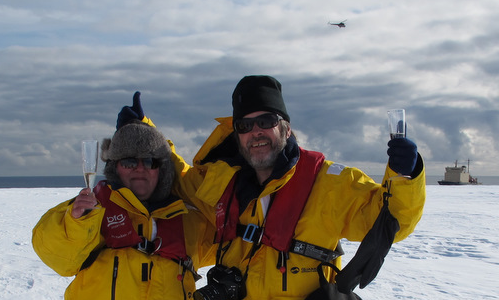
(this contains the text from the RTPS Format issue 53 Nov 2011
with more photos)

Having been to Svalbard/Spitsbergen (78° N, due north of the Norwegian mainland) in the Arctic a few years ago my wife Diane and I were keen to visit the Antarctic. Most trips there are on boats sailing south from Chile/Argentina or Australia/New Zealand with many sea days and not much time on land. The larger cruise ships with upwards of 500 people on board do trips to this last pristine wilderness on the planet, but as there are so many passengers it is not always possible to do shore excursions. It seemed pointless to us going to the ends of the earth and not getting close to the fabulous wildlife and natural beauty on offer.
We found a trip last Christmas that will probably never be repeated due to stricter anti-pollution laws coming into force, but which fulfilled all our requirements. The ‘Kapitan Khlebnikov’ is a working Finnish built and Russian crewed icebreaker which normally sails the frozen oceans as an escort ship guiding less able boats through thick sea ice. For the past few years she has been used as an expedition vessel for adventure tour operators such as Quark. She is comfortable and fast but not a “typical” cruise ship - functionality, safety and environmental impact are more important than dressing up for dinner!

The trip we chose was called ‘Epic Antarctica’ and the itinerary was to board the ship in Port Stanley, Falkland Islands, sail due south to the Antarctic Peninsular via the South Sandwich Isles and then go all the way along the Phantom coast and Ross ice shelf until reaching the Ross sea where we would spend some time visiting research stations, wildlife and historic huts. We would visit MacQuarie Island before finally disembarking in Hobart Tasmania 30 days and 7000+ km later.

We left London at the end of Nov 2010 only a couple of days before the really bad winter started in the UK and arrived for a stopover in Chile a few days early. As there is only one flight per week to Mount Pleasant from Santiago, we certainly did not want to miss it!
After three days sightseeing we left Santiago and flew down to Punta Arenas two hours away. This was a fantastic flight which allowed us the most superb view over the Torres Del Paine national park. The tall peaks are spectacular. This area of South America, being right at the tip of the continent, is renowned for high winds and passengers did experience a bit of a battering. It did not get any better eventually arriving at Mount Pleasant in the Falkland Isles in a strong cross wind that left the sea looking very frothy indeed (the other runway at right angles which would have been better for landing was being dug up).

We were supposed to immediately embark on the ship moored in Port Stanley harbour but the high wind put a stop to that, so with 107 passengers sheltering in the tourist information office and all the hotel rooms full, the tour guides initiated ‘Plan B’ and rang the locals to ask if they could put us up for the night. We stayed with a lovely couple and ended up drinking tea, eating cakes and checking e-mails with them until late. The following morning the wind had died down somewhat and after another short delay as the two anchors had become entangled we finally set sail for Antarctica.
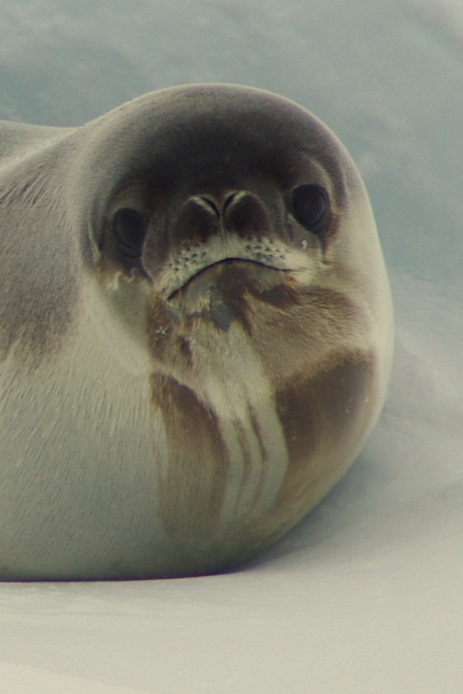
We then spent a couple of days sailing across the Drake Passage (known for demanding the ‘Drake tax’, i.e. giving sailors extreme seasickness), then through thick ice and amongst icebergs that towered above our ship (the ship had ten decks above sea level). It was incredible to find ourselves quite often sailing between huge ‘bergs’ 50m tall, but best not to think about the fact that the other 90% of the ice was directly under the ship! The scenery was both dramatic and stunning. The quality of the atmosphere and light was a photographer’s dream.
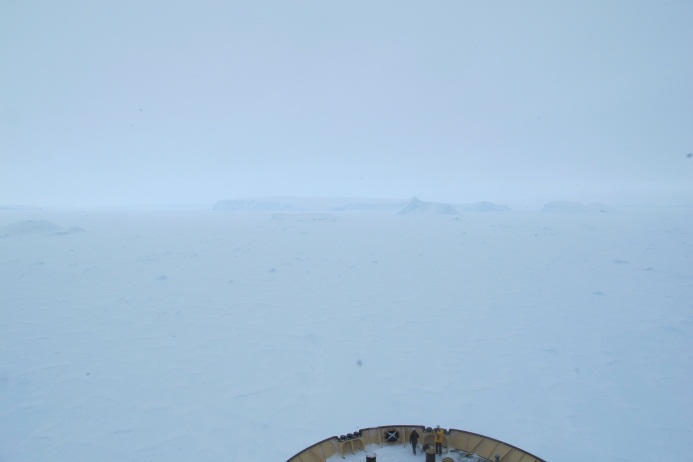

We visited several research stations - Palmer Station (US), Mc Murdo (US) and Scott Base (NZ) and were greeted by researchers glad to see a few different faces. Our ship also delivered essential items to these areas. At Palmer station, we were told they only see a ship once every few months so it was quite an occasion when one did appear.

Life wasn’t all plain sailing as we tried to find our way
through the
ice to the phantom coast – the icebreaker having numerous attempts at
breaking its way through the fast ice. Luckily we did not get stuck,
but the ship has done in previous years. Ice breakers can’t have
stabilisers as they would get damaged in the ice, so, if the wind gets
up while away from land the boat starts rocking ±30 degrees making life
very uncomfortable. The worst areas for this are the Drake Passage and
the entire Southern Ocean.

Being well inside the Antarctic Circle (67°S) in December
means the sun
never sets – we had about three weeks of continuous daylight. We were
regularly changing clocks as we had to lose ten hours in time zone
changes in just over three weeks of cruising. Going over the dateline,
we went straight from 18th to 20th December. The two passengers whose
birthdays were on the 19th really felt let down, but we all made it up
to them with birthday cakes and celebrations.
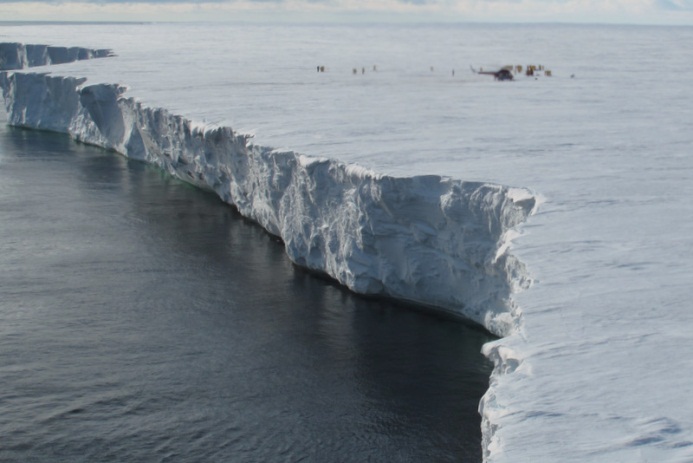
It was strangely quiet and peaceful at Shackleton’s and
Scott’s
historic huts from around 1900-1910 – we had arrived in heated
icebreakers with GPS, email and helicopters in good “summer weather”
i.e. above -2C, whereas the explorers had to live out the winter in
constant darkness, 100mph winds and -40C temperatures with no hope of
rescue if something went wrong. We got to see inside the darkroom in
some of the huts (glass plates then – no digital!) and the smell of the
developing chemicals was still strong despite not having been used for
over 100 years. Sadly, to prevent further deterioration of these
historic monuments, visitors are only allowed to enter for just a few
minutes each. The environment is so dry, even condensation
from breathing can have a detrimental effect. It seems very strange to
be told that a place covered in so much snow is arid. But, its unique
location only realises approx 20 inches of water in the form of snow to
fall annually around the peninsular. The South Pole being so much
higher has far less, just two inches annually. The 3km thick ice at the
pole has therefore accumulated over many thousands of years.
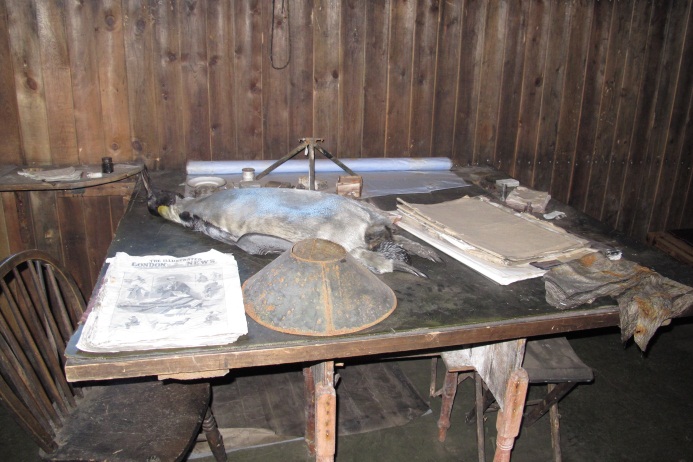
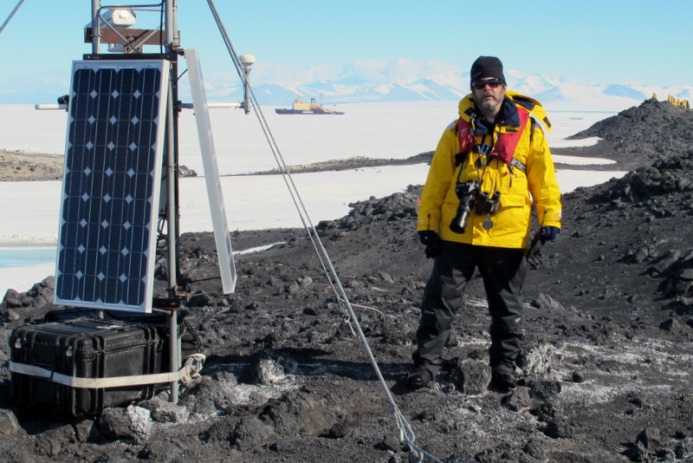
It seemed very strange to visit New Zealand’s Scott base where the chef was scraping snow off the barbecue to cook for someone’s birthday celebration. The smell of frying onions was unbearable to endure. Many of us would have killed for a burger at that point!

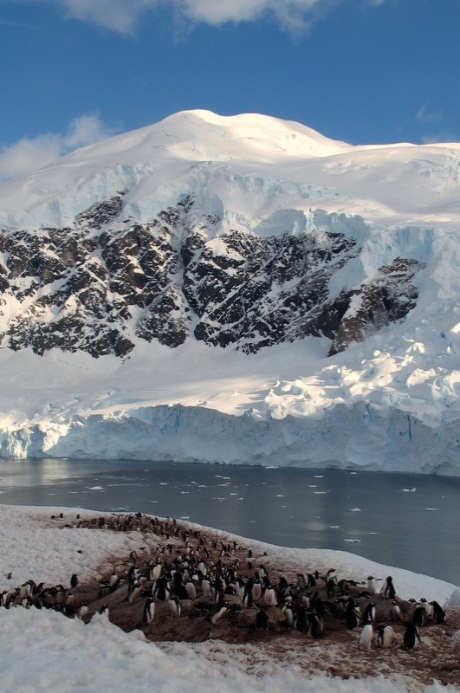
With the boat parked in the Ross sea ice we could see steam and smoke from Mt. Erebus which is an active volcano – the nearby McMurdo research station had live CCTV of the bubbling magma pool. We were so lucky to have ‘parked’ in the ice here for two days. The weather was fantastic and in the morning we pulled back the blackout curtains to gaze out at Shackleton’s hut in the distance. A few minutes trip in the helicopter and we were at Cape Evans where Scott’s hut is located. The historic huts are being renovated by volunteers. We chatted to one man who was working there as a carpenter for four months over the summer.
The captain of our ship always invited some of the volunteers
aboard
for lunch. As I am sure you can imagine, fresh fruit and vegetables
were in short supply. During our stay here we were lucky enough to see
in the distance the launching of a research weather balloon and a
Galaxy air freight plane landing on the distant Pegasus ice runway.
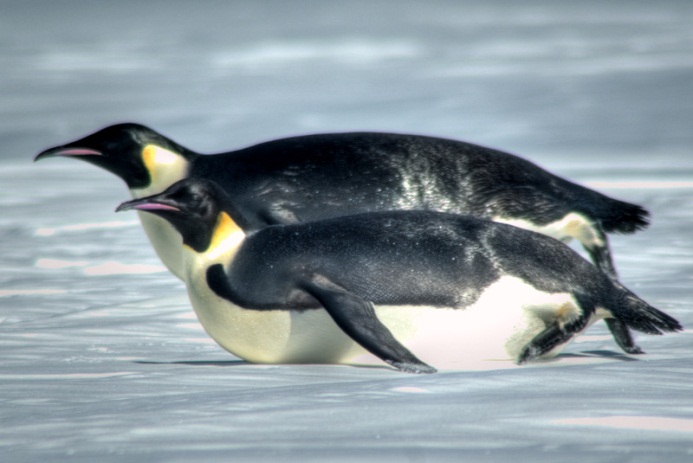
Christmas Day was spent at Cape Adare on the ice surrounded
by very
inquisitive Adelie penguins, all 250,000 of them. If you sit still,
they will come right up to investigate. We had been informed that we
were never to get closer than 5m to the wildlife. However, no one told
the wildlife that! They were just as interested in us as we were in
them. We visited many penguin rookeries (gentoo, king, emperor, adelie
and rock hopper). Many colonies were home to more than one species –
the tall and contemplative emperors (they spend the day just staring at
each other or their own stomachs) surrounded by the shorter and
hyperactive adelies put us in mind of parents and children in a school
playground. Some ofthe penguins scrambled 400m up cliffs to their
nesting sites.


Christmas Day was also Polar Plunge day. Yes, 20+ mad people
donned
swimsuits and jumped in to swim with the penguins. Sadly for them, as
soon as they jumped in, the penguins jumped out. It would have been
even more fun if the minke whale returned that had been spotted earlier
in the morning using our ‘swim pool area’ as a breathing hole.

Sailing back to Hobart we stopped at Macquarie Island (a
Tasmanian
dependency) to see king, rock hopper and royal penguins surrounded by
sleeping elephant seals. The light mantled albatross also nests here,
such a majestic bird.

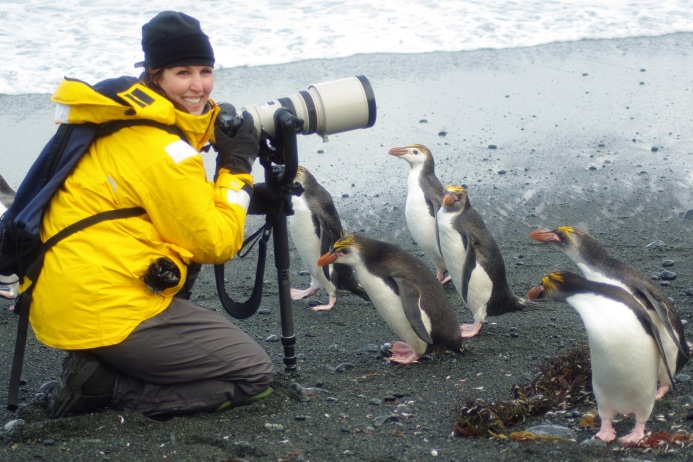

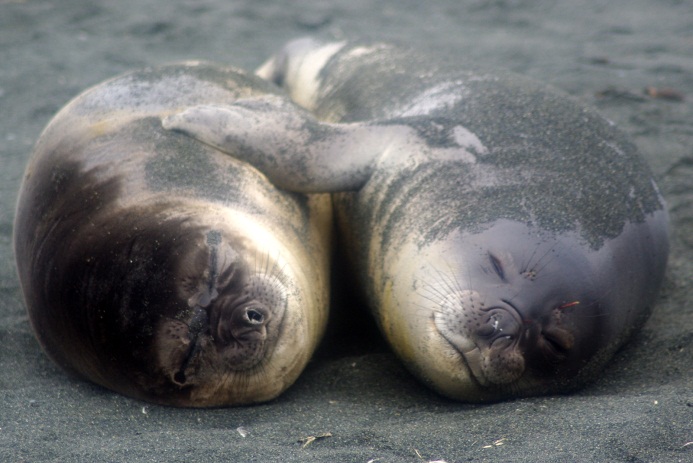
We’d love to go back to the Antarctic but it’s probably a once in a lifetime experience for us and this trip probably won’t be repeated. We feel so lucky to have seen at least five species of penguin, five species of seals, three species of whales, numerous sea birds and the last pristine wilderness on this planet. We also made many new friends from around the world.
There are many larger ships that visit, but for us the whole point was to go ashore to “meet the wildlife” in their natural habitat. South Georgia and some of the peri-Antarctic islands near South Island New Zealand are apparently worth seeing according to others on our trip.
Our travel agent was “Discover the world” in Banstead. Quark
Expeditions currently cover both polar regions, but sadly, there is now
only one remaining ice breaker in their portfolio, and as it is
nuclear, it will probably never be allowed in the Antarctic waters.
http://www.discover-the-world.co.uk/en/destinations/antarctica/
More information on the trip can be found on our website
http://www.srdw.co.uk/travel/2010south/index.html